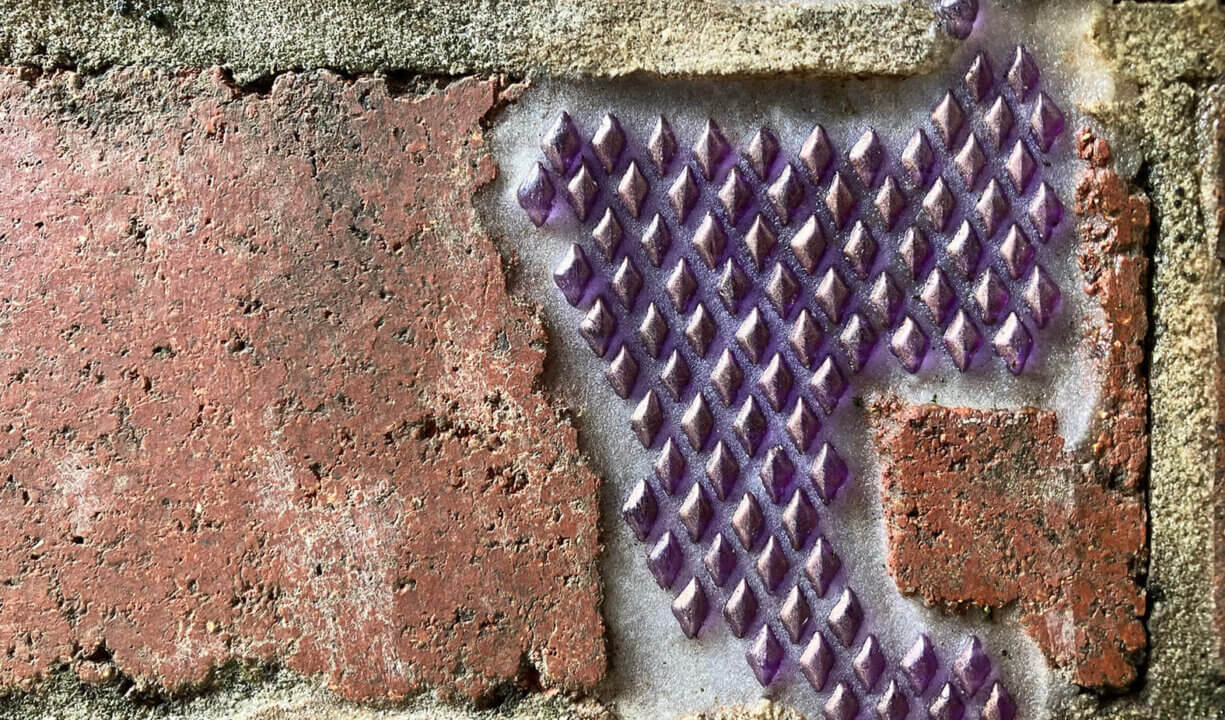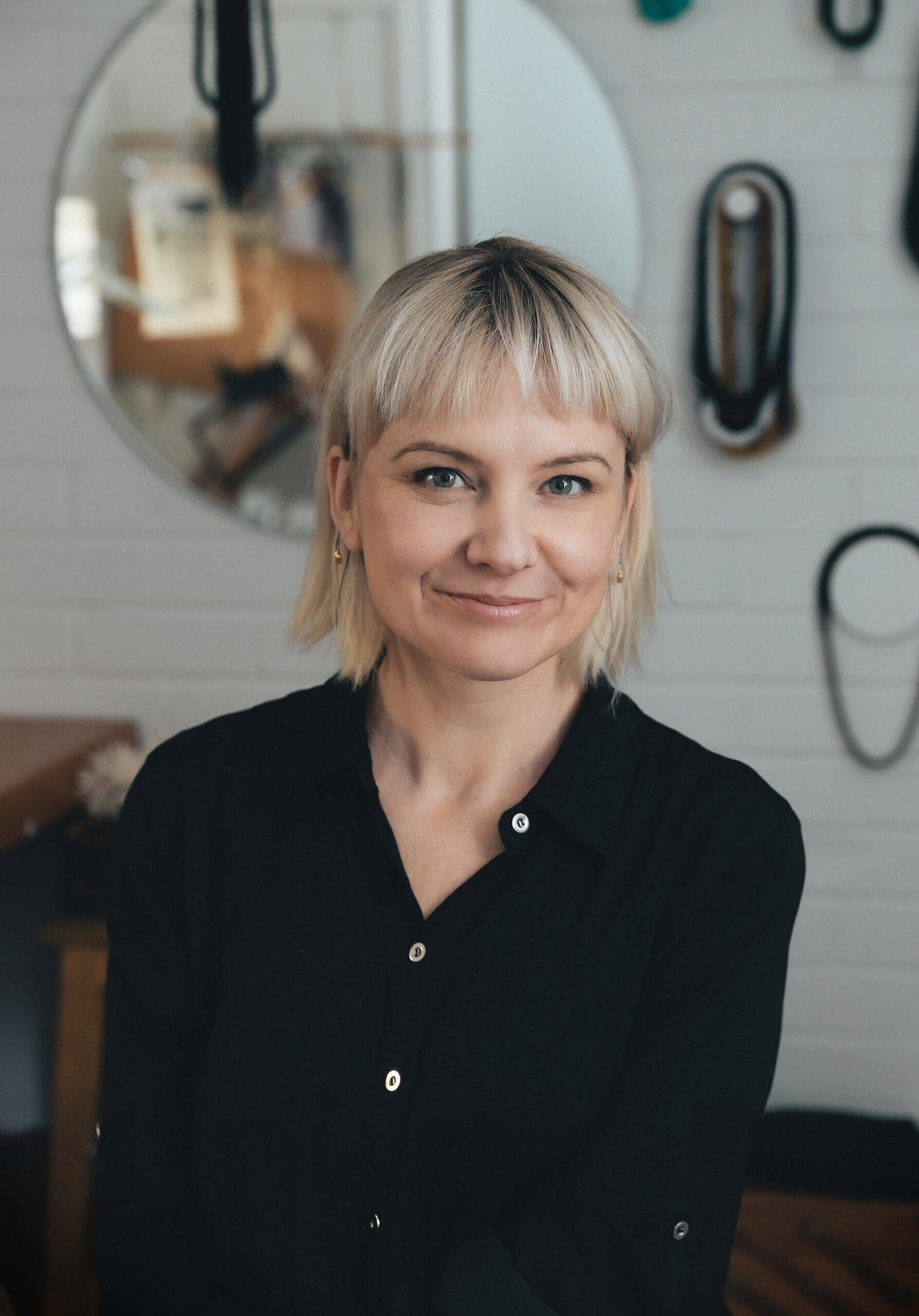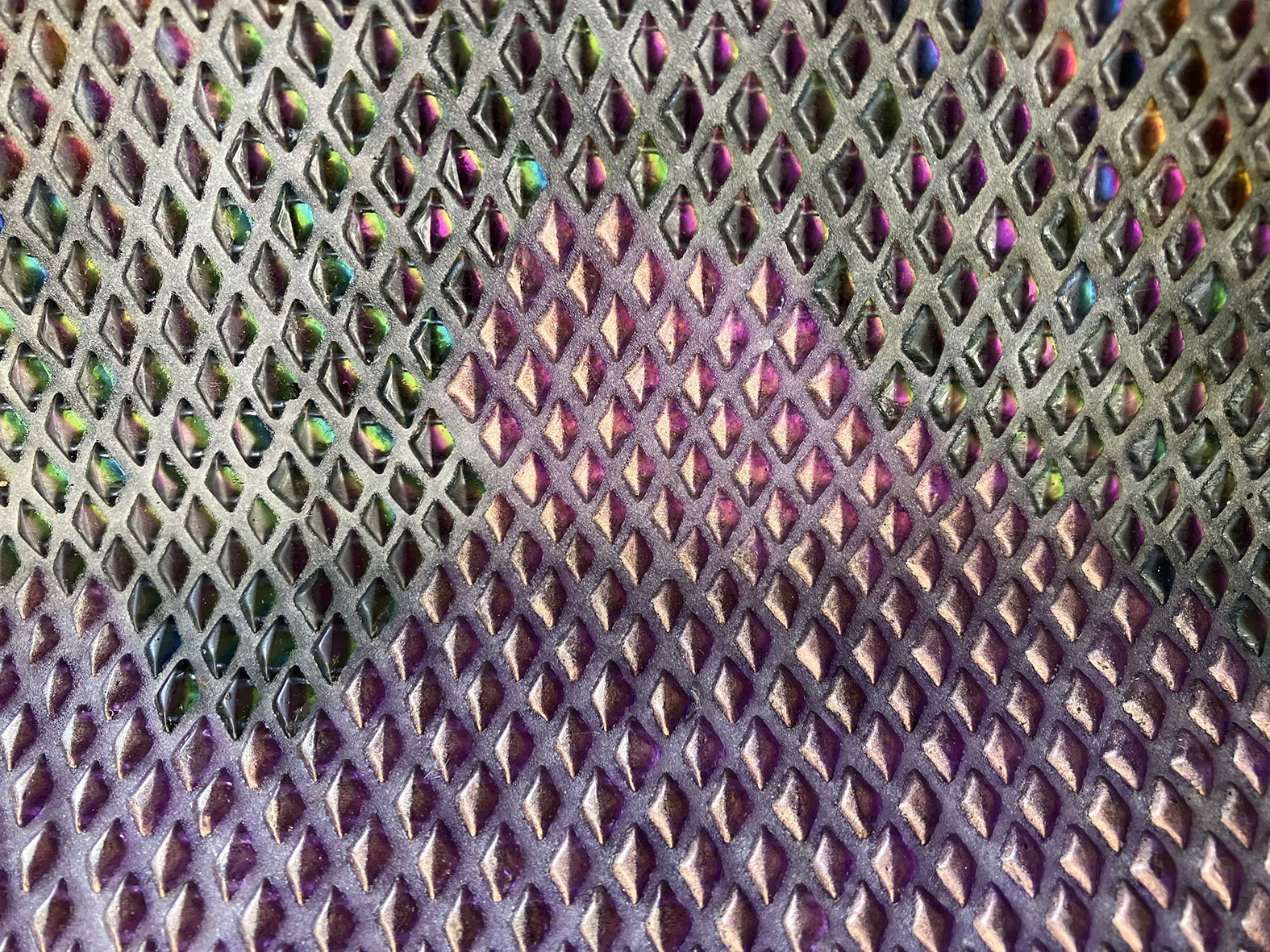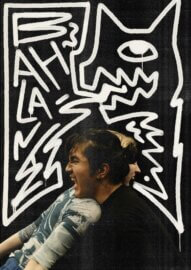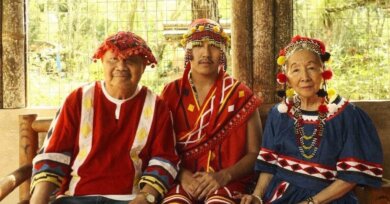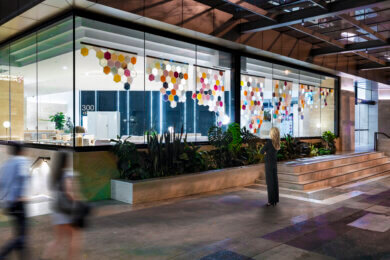TELL US A LITTLE BIT ABOUT THE PROJECT…
Paula Dunlop (PD): The project was commissioned by Metro Arts in 2022. The brief was part art, part design, and exactly the kind of work that I love to do because there was a distinct functional element to the outcome: to create a work that would draw casual passers-by into the laneway, to then grant them a better sightline to Metro’s exhibition spaces.
I enjoy collaboration and purposeful making, particularly when the experience of end users or audiences is a focus — how bodies connect with, interact with, or relate to what I make is central to my work.
I also enjoy the challenge that comes with working within certain conditions and constraints, and learning new processes and techniques. The project’s development time gave me the opportunity to push materials that are familiar to me into new territory, and experiment in ways I had long wanted to try.
WHERE DID YOU FIND INSPIRATION FOR THE PROJECT?
PD: I took my lead from the patterns of algal growth on the laneway walls. While photographing them on one of my visits, a caretaker mentioned that he was forever scrubbing them off — his comment crystallised the idea of a work that both highlighted, and (with the gradual return of the growth) was highlighted by, this passage of moisture down the walls.
While these particular growth patterns are formed by runoff, it brought to mind the creeks and springs that once existed nearby, the flood history of the area, and even an image of melting ice cream seeping through the walls of the Peters Factory that, in more recent history, stood on the site.
I enjoy the algae’s indifference to the human efforts of the surrounding built environment and our desire to shape, contain, or control it. It’s operating in its own world, according to its own systems. I often take a sort of comfort from things that are outside human culture, that point to these other movements and systems. It’s like a balm to neurosis! I worked with the hope that over time the algae and lichens might help my interventions into the laneway — the inlaid panels of glass beads — find a belonging there.
The ideas of belonging and difference that play out in this work connect with broader interests I have in how we see ourselves both in the world and apart from it. In particular, our ‘dressing’ of our bodies and our spaces, and how it can function as a way to establish a sense of ourselves in relation to and in reaction to our circumstances. I think any making has an element of this going on. We make to make a place for ourselves in the world we’re thrown into.
HOW WOULD YOU DESCRIBE YOURSELF AS AN ARTIST?
PD: I usually describe myself as an artist, designer, and maker. My background is in visual art and fashion design, and I still work across both.
Most of what I do is what might be called materials- or process-led. I value the learning and understanding that comes from handling materials — finding out what they can and can’t do, and trying to work with them rather than imposing on them.
I am interested in what we make, how we make, and why — not just art and design making but also the day-to-day interactions with the materials, objects, spaces, and processes that shape so much of our living.
